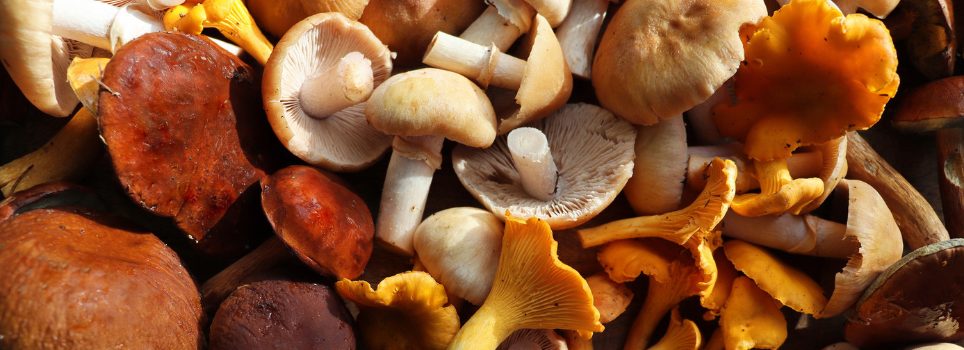Mushrooms are incredibly versatile and make a delightful addition to meals, whether used as a main ingredient or as a side dish.
In fall, fresh mushrooms are readily available, allowing us to enjoy their numerous nutritional properties fully.
As members of the kingdom Mycetae, in Italy, mushrooms undergo a thorough inspection by the ASL (Local Health Authority).
It is common knowledge that not all mushroom varieties are edible, so it is wise to avoid picking them without proper understanding. Instead, consulting a mycological inspector from the local ASL is recommended for inspection before consuming or purchasing fresh mushrooms.
There is a wide range of edible mushrooms, including:
- Porcini
- Champignon
- Chanterelles
- Portobello
- Shiitake
- Prataioli
- Chiodini
- Cardoncelli
What are the Benefits of Mushrooms?
Mushrooms are composed of nearly 90% water, making them low in calories. A 100g serving of fresh mushrooms amounts to approximately 25 kcal. Nutritionally, they are comparable to vegetables and can be enjoyed as such.
Mushrooms are a valuable source of essential mineral salts, including calcium, phosphorus, magnesium, and silicon, which are crucial for the well-being of muscles and bones. They also contain:
- Selenium, which acts as an important antioxidant;
- Potassium, which helps regulate heart rhythm;
- Manganese, which offers benefits to the thyroid, skeletal system, and digestion;
- Iron, which is necessary for hemoglobin production.
Furthermore, mushrooms are abundant in various B vitamins:
- Vitamin B2 enhances immune function;
- Vitamin B3 aids in nutrient absorption;
- Vitamin B5 plays a key role in macronutrient metabolism.
Due to their protein content, mushrooms provide essential amino acids such as tryptophan, a precursor to serotonin, which is vital for sleep regulation. They also contain lysine, which promotes cartilage development and bone calcification.
Lastly, mushrooms are rich in antioxidants, which contribute to the prevention of aging and protect against free radical damage.
Intoxication
The “destroying angel” and “deadly webcap” are among the most poisonous mushrooms. These mushrooms produce toxic substances that can cause various disorders when ingested. Short latency intoxication is characterized by gastrointestinal symptoms that typically last from a few hours to a few days. In contrast, long-latency intoxication is much more severe and can affect the nervous system, potentially leading to death.
Tips for Safely Consuming Mushrooms
The National Institute of Health has compiled a set of guidelines for the safe consumption of mushrooms. While picking mushrooms can be enjoyable, it is essential to be cautious during their preparation and consumption.
Therefore, it is important to:
- Refrain from consuming mushrooms that have not been inspected by a certified mycologist;
- Avoid relying on mushroom identification apps or social media experts’ assessments using photographs;
- Avoid excessive consumption of mushrooms;
- Exercise caution when feeding mushrooms to children, as mushrooms contain substances that may be challenging for children’s digestive systems to fully process;
- Avoid consuming mushrooms during pregnancy;
- Consume mushrooms only when they are in perfect condition;
- Ensure mushrooms are thoroughly cooked before consumption;
- Before freezing, blanch or cook mushrooms in another suitable manner, and consume them preferably within six months;
- Do not gather mushrooms from areas near roads, industrial sites, or heavily cultivated areas to minimize the risk of pesticide contamination;
- Do not accept or distribute harvested mushrooms unless a professional mycologist has inspected them;
- Remember that botulinum toxin can develop in mushrooms preserved in oil.
Mushrooms: How to Enjoy Them
Mushrooms can be savored as a delightful side dish, prepared by sautéing them with oil, garlic, and parsley or incorporated into a flavorful risotto. To complement their seasonal appeal, they pair exceptionally well with a serving of polenta.
When you have an abundance of mushrooms, here are some storage methods:
- Refrigeration: Store them in the refrigerator for a few days. It is advisable to place them in a breathable paper bag to allow proper air circulation;
- Freezing: Blanch the mushrooms in boiling water for a few minutes before freezing them;
- Dehydration: Utilize a desiccator to remove all the moisture from the mushrooms;
- Preserving in oil: Exercise caution to prevent botulinum toxin formation when using this technique.
-
3,400 Physicians
-
110,400 Annual surgeries
-
190,400 Annual Inpatient Admissions
-
928,000 Patients


